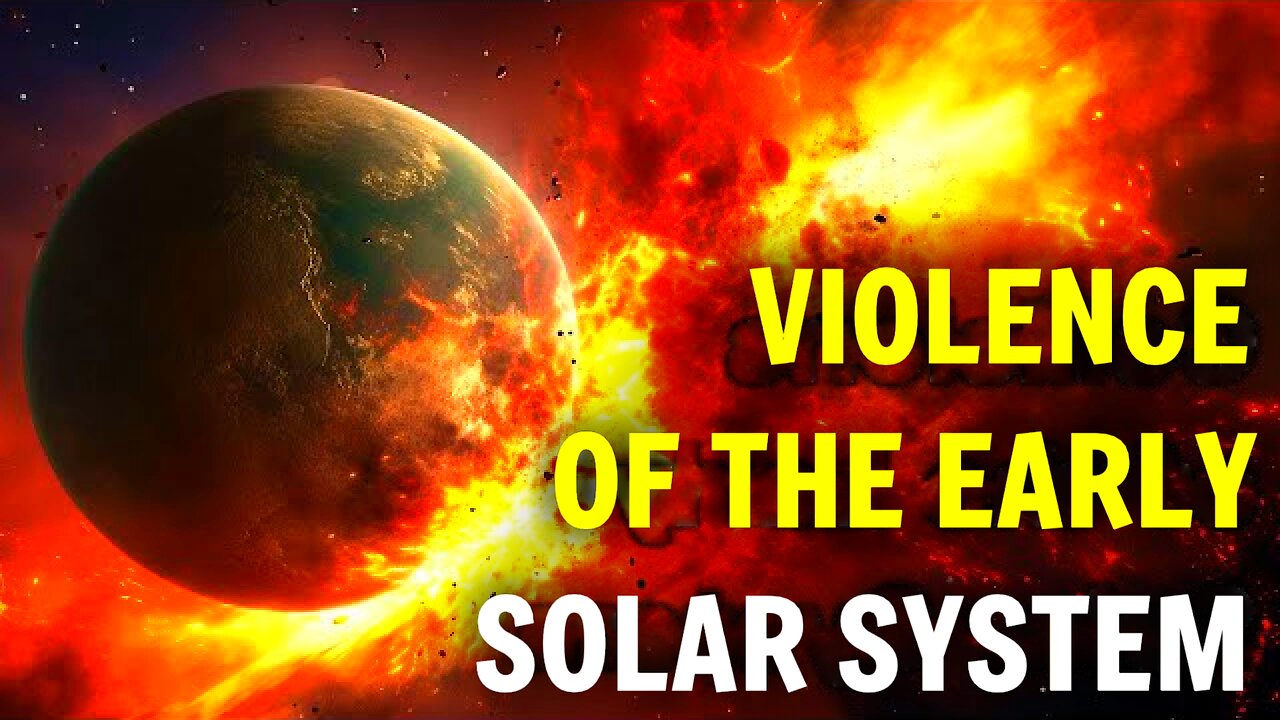Premium Only Content

The SOLAR SYSTEM's Violent History in Under a Minute!
Please Support The RUMBLE Channel
50% of all support (after fees & tax) will go to a private Moon mission
RUMBLE Has More Videos & YOUR VIEWS Help Raise Money For a MOON Mission!
https://rumble.com/user/WhatsNextVids
Patreon:
https://www.patreon.com/user?u=37594401
Buy Me A Coffee:
https://www.buymeacoffee.com/whats.next
Donate With Cash App:
https://cash.app/$YTpayments
Total Updated Weekly on X/Twitter:
https://x.com/WhatsNe75388303
Theia’s Collision with Earth
The formation of the Moon is believed to have been a result of a violent collision between Earth and a planet called Theia, approximately 4.5 billion years ago. This theory, known as the Giant Impact Hypothesis, suggests that Theia, which was around the size of Mars, directly collided with Earth, leading to the ejection of a massive amount of material that eventually formed the Moon.
Late Bombardment Period
The Late Bombardment Period, which took place around 4 billion years ago, was a time of intense bombardment in the solar system. This period was likely caused by the leftover debris from the solar system’s formation being flung about like pinballs. This resulted in numerous craters across various celestial bodies in our solar system, including planets, moons, and asteroids.
Five-Planet Nice Model
The current arrangement of planets in our solar system did not form in their present positions. Instead, they are thought to have drifted into them over time due to gravitational interactions between celestial bodies. This solution is known as the Nice model, proposed by astronomers in France in 2005. This model suggests that there used to be an ice giant planet like Uranus or Neptune that was hurled out of our solar system due to movements of other giant planets. There is also no explanation provided by this model regarding the postulated Planet Nine; thus, it may have been captured from another star system if it exists.
Roaming Jupiter
According to research from Lund University, Jupiter is believed to have originally formed in an orbit four times farther away from the sun than its current position. Over a period of less than a million years, it migrated closer to its present position due to gravitational interactions with other celestial bodies.
In conclusion, our solar system has undergone significant transformations since its formation. These events include Theia’s collision with Earth resulting in the Moon’s formation, intense bombardment during the Late Bombardment Period, drifting of planets into their current positions based on the Nice model, and Jupiter’s migration towards its present orbit. These discoveries provide valuable insights into how our solar system evolved over time and help us understand planetary systems beyond our own solar system as well.
-
 LIVE
LIVE
TimcastIRL
53 minutes agoKash Patel CONFIRMED, Deep State PANICS, Mitch McConnell To RETIRE w/ Kevin Smith | Timcast IRL
12,527 watching -
 1:02:54
1:02:54
Glenn Greenwald
22 hours agoSouth Korean Economist Ha-Joon Chang on the Economic World Order, Trump's Tariffs, China & More | SYSTEM UPDATE #410
14.2K16 -
 1:02:27
1:02:27
Donald Trump Jr.
5 hours agoBye Mitch, plus Kash confirmed, Interview with AJ Rice | Triggered Ep.218
69.3K49 -
 LIVE
LIVE
The StoneZONE with Roger Stone
21 minutes agoRoger Stone Hails Confirmation of Kash Patel, Trashes Schiff for Attacks On Patel | The StoneZONE
702 watching -
 41:18
41:18
Kimberly Guilfoyle
5 hours agoToday, We Kash in on Equal Justice, Live with Ryan Walters & Daniel Turner | Ep.198
54.1K19 -
 1:36:50
1:36:50
Redacted News
4 hours agoThe TRUTH in Ukraine has been EXPOSED by Trump and they are melting down | Redacted w Clayton Morris
86.8K143 -
 2:05:35
2:05:35
The White House
6 hours agoPresident Trump Hosts a Reception Honoring Black History Month
49.8K35 -

Josh Pate's College Football Show
5 hours ago $0.12 earnedCFP Expansion: Latest Intel | CFB’s Schedule Problem | Arch Manning Hype | ACC Program Rankings
5.96K2 -
 55:52
55:52
LFA TV
1 day agoTrump vs. Europe | TRUMPET DAILY 2.20.25 7PM
7.85K2 -
 31:02
31:02
Chrissy Clark
2 hours agoAn IVF Nightmare, Trump’s Illegal Immigration Crackdown, & Biden’s Student Loan Plan BLOCKED I URS
4.07K6